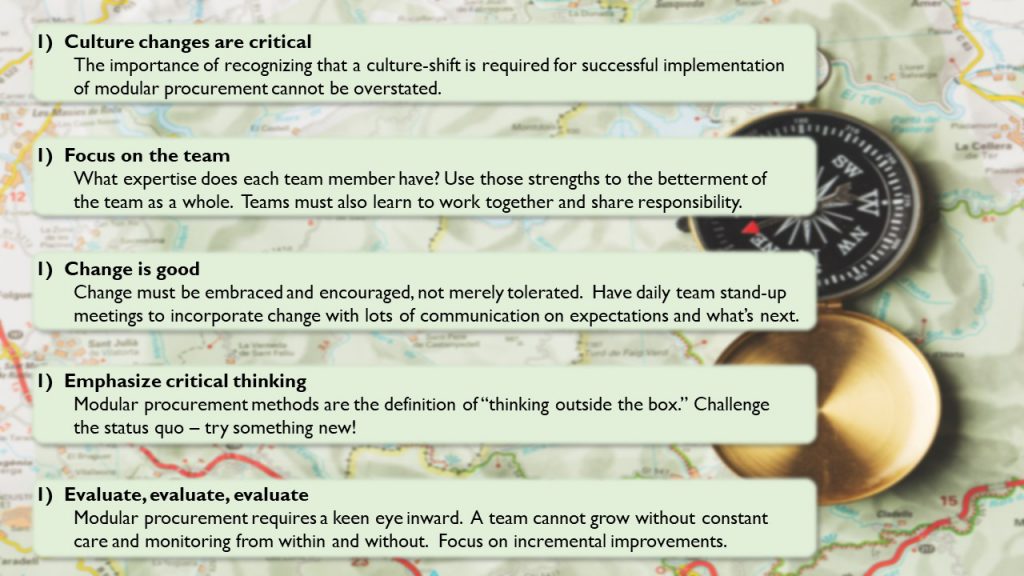
Top Five Ways to Make Modular Procurement Work
February 12, 2018
If you’ve ever been faced with the frustrating situation of having a Phillips head screwdriver in hand when you actually need a flathead, then you know what it’s like to not have the right tool when you need it. To deal with the myriad of issues they face on an almost daily basis, state procurement officials need all the tools they can get their hands on, and modular or iterative procurement is a key addition to the toolbox.
Modular and Agile methods can be game-changers in procurement offices, especially when it comes to IT procurement. Recently, NASPO and NASCIO joined forces by bringing State Chief Procurement Officers (CPOs and State Chief Information Officers (CIOs) together to talk about how to improve IT procurement. One of the key recommendations of the task force of CPOs and CIOs was to “use iterative/non-waterfall procurement methodologies when appropriate to improve procurement cycles, add flexibility, and reduce risk.” Everyone agrees that Agile and other iterative procurement methods are the future of state procurement… but how do we get there from here?
The road to true iterative procurement can be a rocky one, and if a state procurement office doesn’t plan well, those rocks can turn into boulders. It is key to think through the switch-over to non-waterfall methods, communicate with staff and key stakeholders about the changes being made, and constantly re-evaluate whether what is happening is working toward the betterment of the procurement process.
Here are five tips to making modular and iterative procurement methods work in your state office:

For more information on the history of how we got to modular and Agile procurement approaches, the methodologies and implementation tools needed to use these methods in modern procurement offices, and helpful tips and illustrations, check out NASPO’s Modular Procurement Primer and the webinar “Agile Procurement in Process,” featuring Scott Smith of Washington State.
